Neil Gartell Ng47

In an era where AI compels us to examine our own human consciousness, my art opens a new dialogue, one that offers a visual response. I am fascinated by how thoughts connect and shift. How they break apart, merge, and form new ideas, its ever-changing complex nature, shaping how we feel and think.Through my practice, I explore the essential connections between shape, colour, and line, developing what I call Psychoformalism; a visual language that offers a translation of thought into a tangible abstract art-form.I'm fascinated by how intricate and diverse our thoughts really are, yet how naturally they come to us. To me there is a beauty in that effortless complexity. Ultimately it is a reflective artform, one that offers an alternative approach to understanding our neuro-diverse world.
As a child, I sought solitude. This quiet I embraced. I was allowed to focus on my own thoughts and imagery. It was a gift I nurtured.Time at art college, a career in video games development and computer graphics, an overwhelming curiosity of all things, plus an informed awareness that not all that seem to be, is - these too were all necessary steps that have reinforced my journey.I've now come full circle and re-found that solitude. And with the perceptive foundation of a lifetime behind me, the hidden mysteries of consciousness are surfacing.

Copyright Notice
© 2025 Neil Gartell. All rights reserved.
All content on this website, including but not limited to artwork, images, photographs, text, written content, artistic concepts, the term "Psychoformalism," visual compositions, design elements, and all other intellectual property, is the exclusive property of Neil Gartell and is protected by copyright law and other intellectual property rights.
No part of this website or its contents may be reproduced, distributed, transmitted, displayed, published, or broadcast in any form or by any means, including but not limited to electronic, mechanical, photocopying, recording, or otherwise, without the prior written permission of Neil Gartell, except as permitted under fair use provisions of copyright law.
The unauthorized use, reproduction, or distribution of any materials from this website is strictly prohibited and may result in legal action.
For licensing inquiries, permissions, or other requests regarding the use of any content, please use contact form on this website.
Trademark Notice
"Psychoformalism" is a trademark of Neil Gartell.
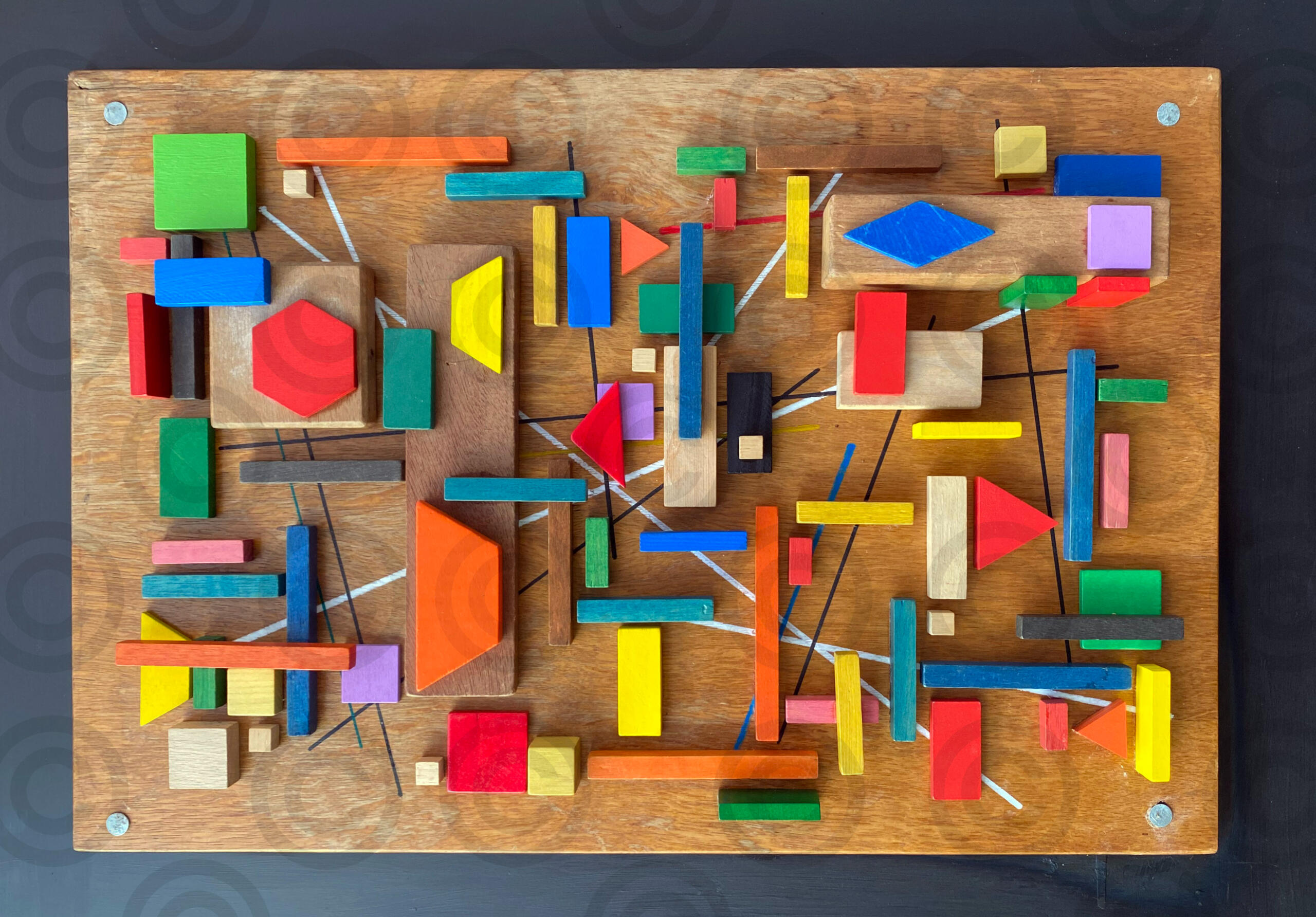
TURBULENT51 cm x 62 cmA more recent piece, Turbulent leads one's consciousness on a frenzied journey. The lines focus the mind into various positions on the plane, simultaneously allowing the vivid colours and geometry to create synaptic distractions, drawing the mind around the piece in many different routes, stopping to focus on small clusters of geometric sets.
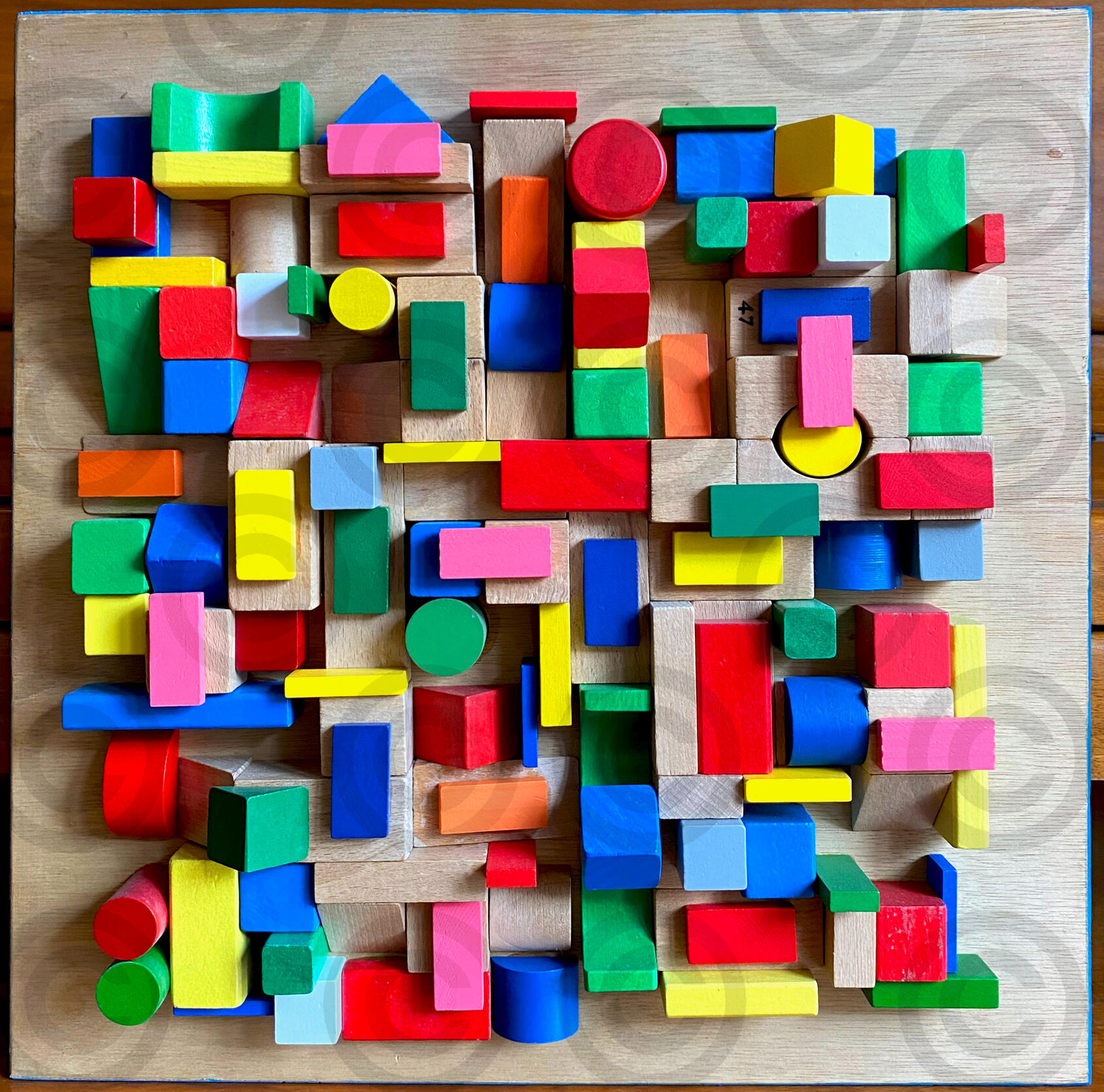
WINDOW45 cm x 45 cmWindow is one of the first pieces that emerged. It became a new way of looking at things for me, just colour and geometry creating a purity of form. The overlaid geometry complex, yet simple and balanced, creating a 'whole'. It is a calming place, a joy to stare out of and lose oneself.
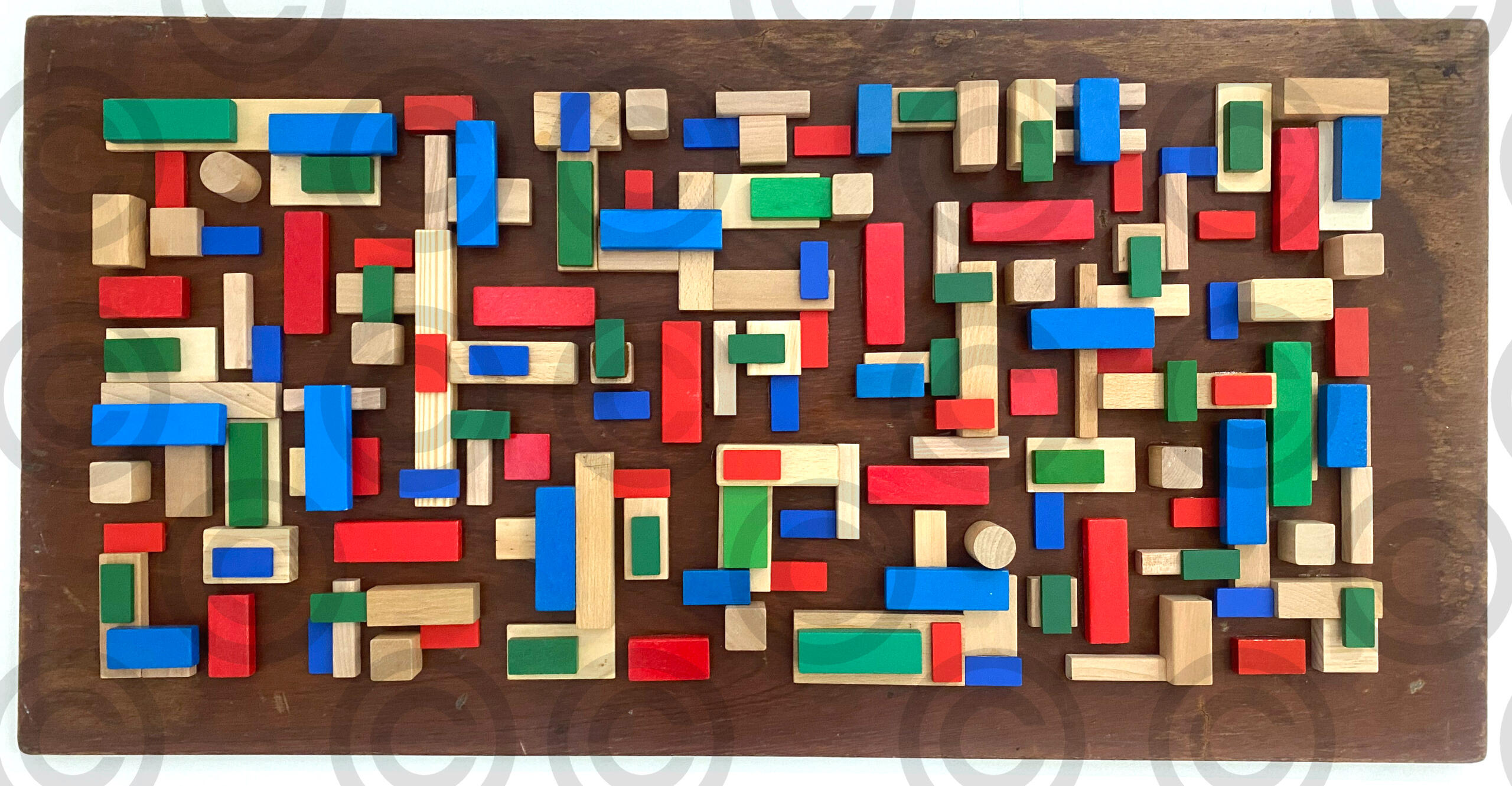
FUNCTION55 cm x 110 cmFunction for me reinforces my ethos surrounding Psychoformalism. The emergence of the colouration, and the overall organised structure of the geometry reflects an automatic way of trying to keep control when interaction and processing is a challenge.
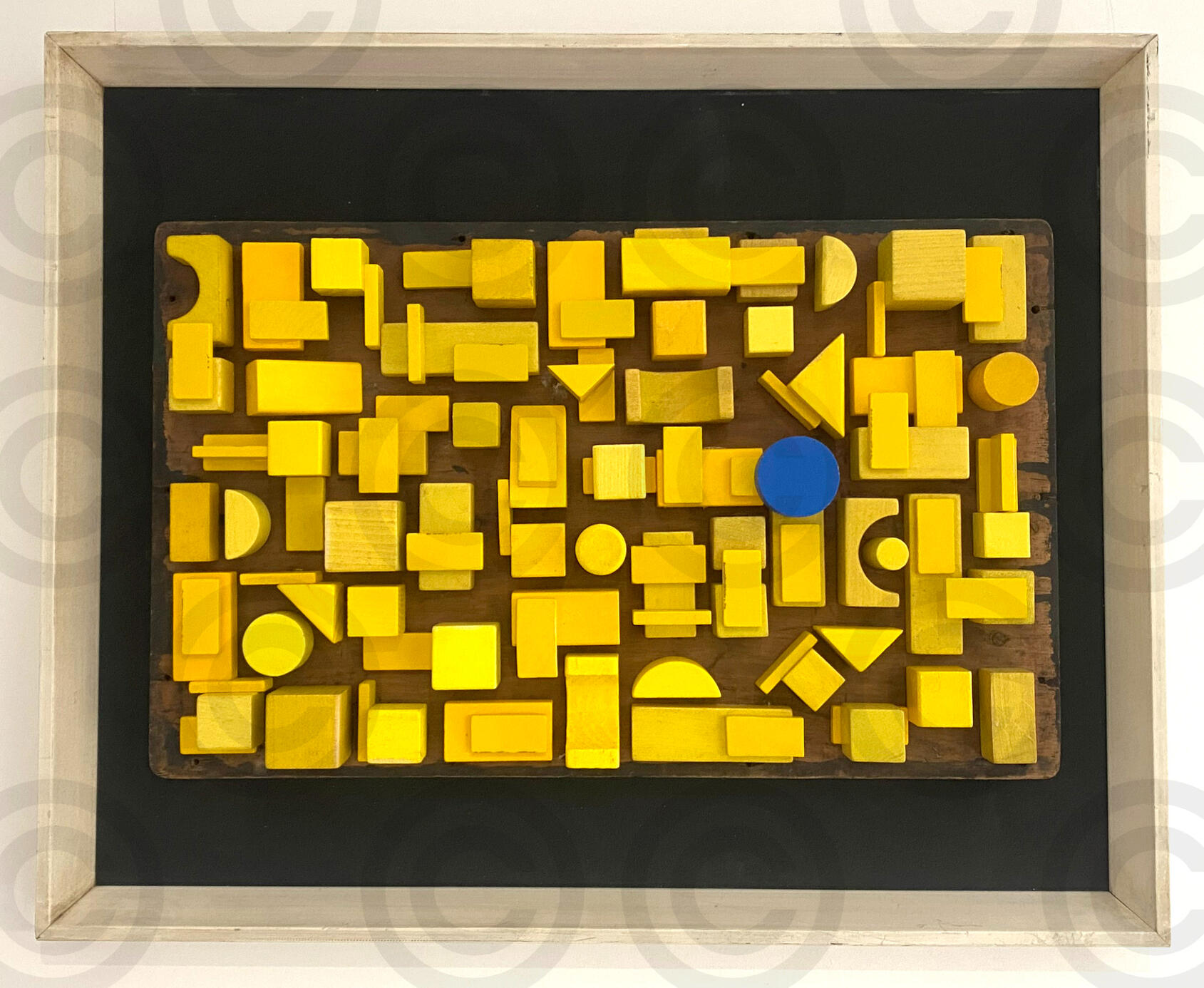
INTRUSIVE52 cm x 64 cmIntrusive shows how simple and small things in the mind can manipulate whole thought processes and even overwhelm them. The yellow geometry, beginning as a light sensation, almost an elemental expression, becoming dominated by the urge of the unwanted thought, which ultimately becomes the only focus.

FLOW55 cm x 110 cmFlow is one my first pieces using line alongside geometry. I believe it successfully demonstrates how thoughts emerge, and converge along conditioned routes. Balance and beauty is still somehow achieved but in a more restricted way.
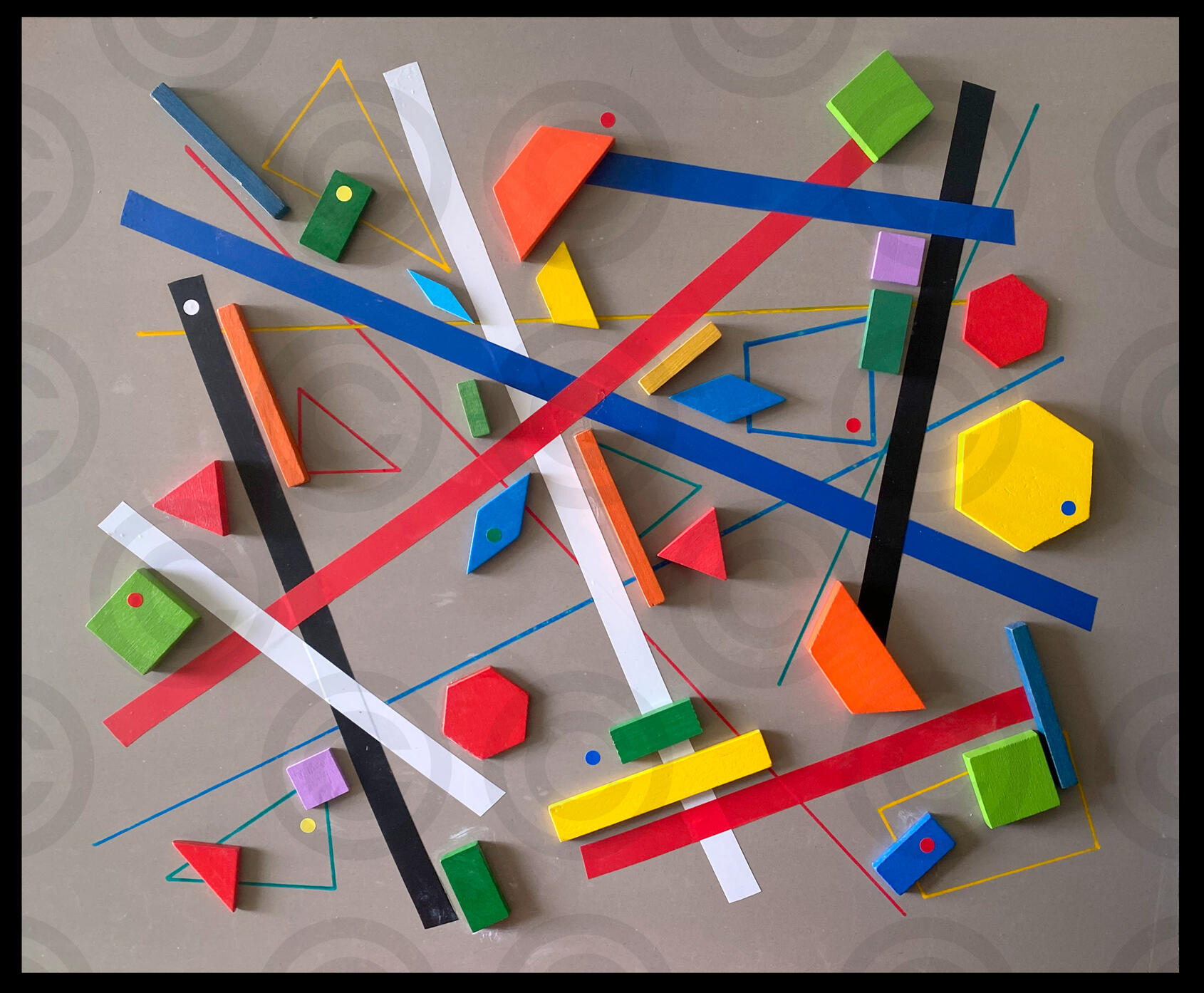
DOMAIN51 cm x 62 cmDomain is all. It is a culmination of everything I have realised to date. Restricted yet free, anarchic yet in equilibrium. A piece that emerged that has helped me to realise that I am on the right path (47)
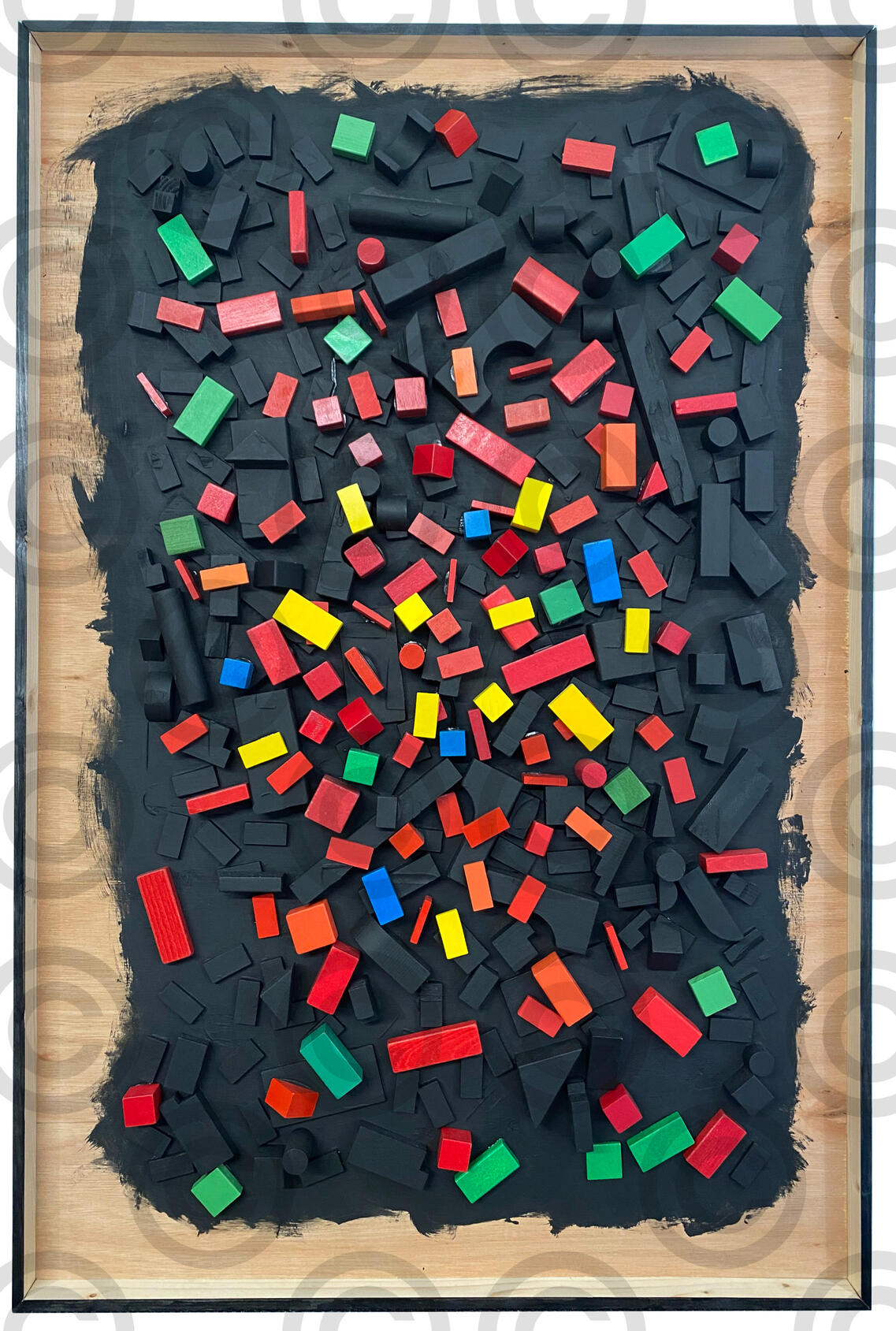
FRAGMENT83 cm x 124 cmFragment to me is akin to a Rosetta Stone of my artwork. It shows in the simplest of terms the visual language of thought. Breaking down, going dark, then reassembling into something new. Sometimes our consciousness needs to fragment before it can rebuild itself in brighter, more complex patterns.
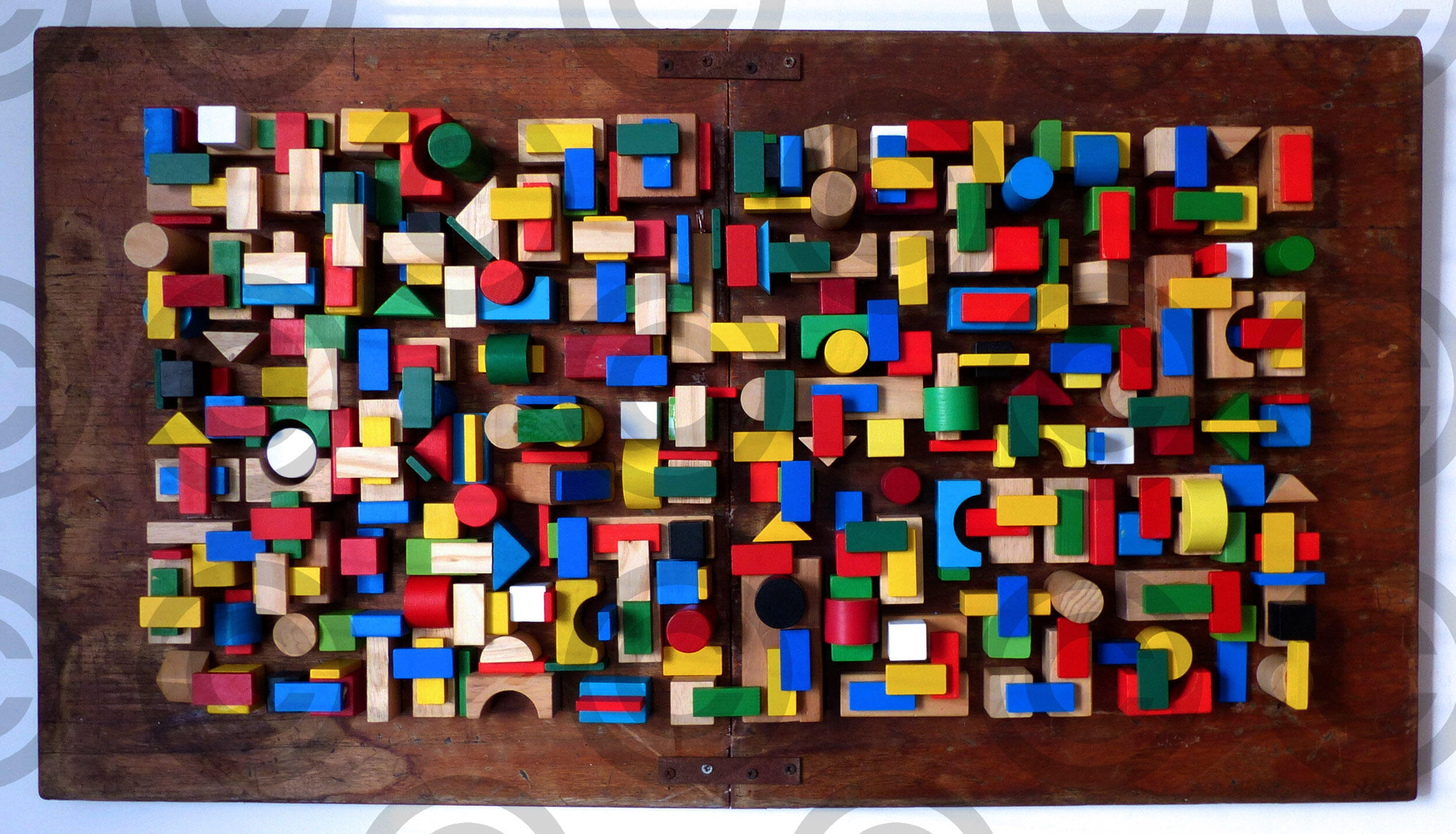
THE NOISE OF A DIVIDED MIND51 cm x 100 cmSOLD
This was my first exhibition piece (thankyou St.Barbe). I took the leap to share my artwork and it was rewarded with positivity. This piece was a visual argument between my left and right brain, something I soon realised I had no control over. One wanting symmetry, one wanting chaos, each wanting a little more than the other.
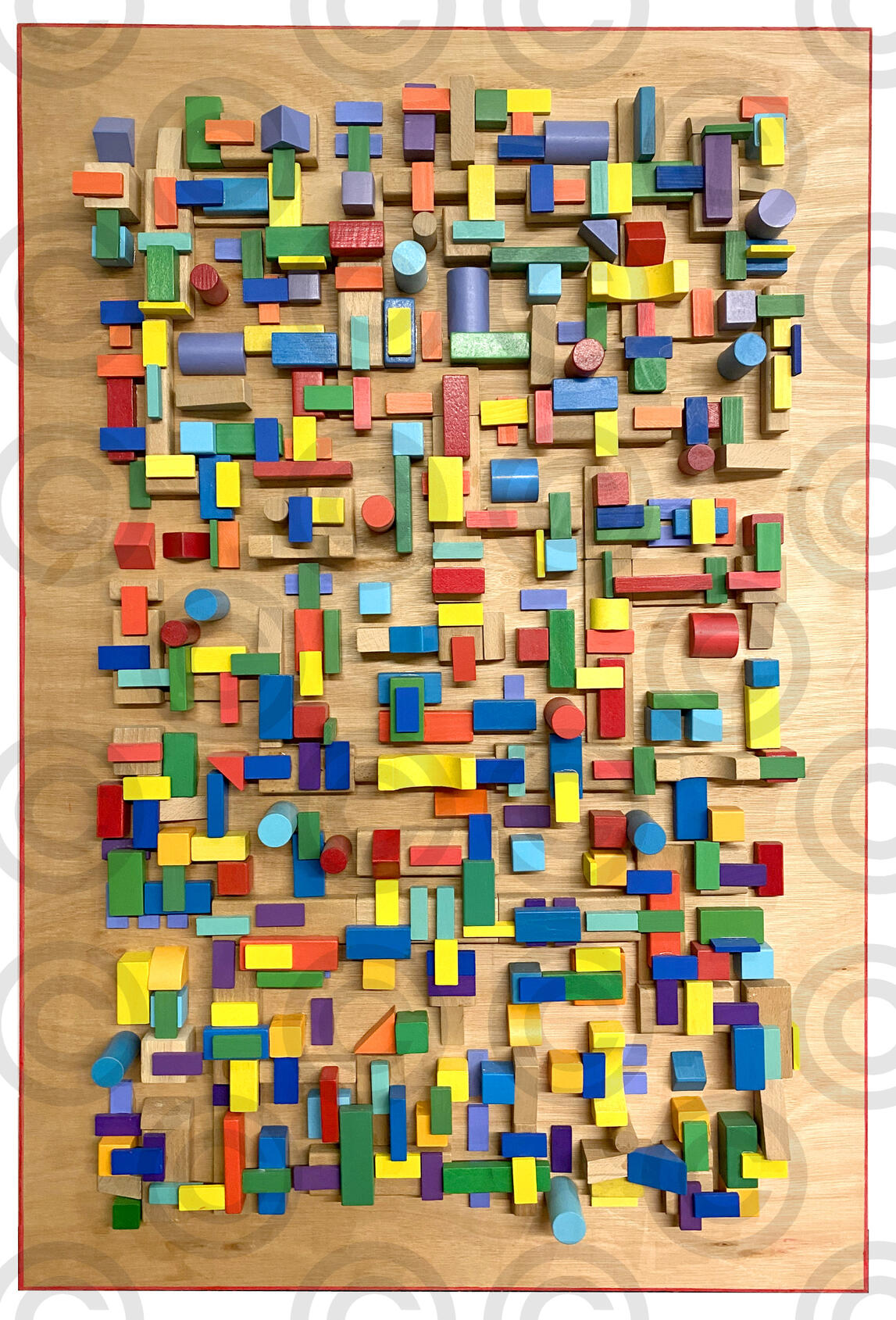
SYSTEMIZE81 cm x 122 cmSystemize (and Aligned) are two similar early pieces that were truly emergent. Before these I tried too hard to compose, rigidly trying to orchestrate the art. Systemise revealed the truth of my thoughts, my compulsion to organise, my desire to find balance, yet my need to be free from structure.

CONTEMPLATION244 cm x 122 cmThis work represents a necessary evolution, allowing a larger vision to emerge. The busy yet balanced arrangement shows how contemplation transforms mental complexity into beautiful order. When you spend time viewing this piece, you get drawn into its depths, creating an immersive experience of absorption and reflection.
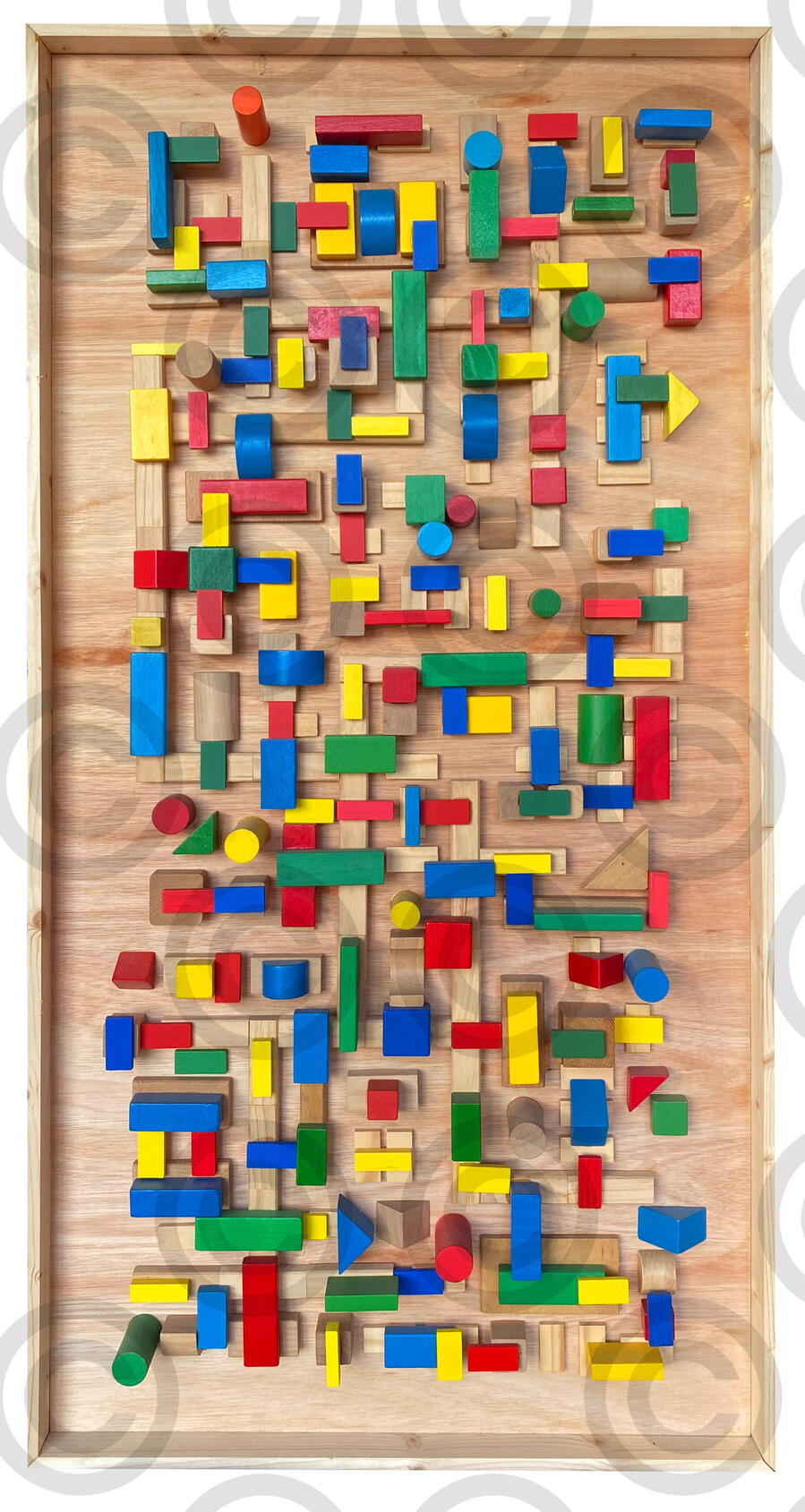
ALIGNED63 cm x 125 cmAligned (as Systemise) emerged as self-awareness pieces. Art that finally was not just controlled line drawing, or stylistic representations of 'things'. It shows something hidden and unique to every conscious entity; the harmonious alignment of thought.
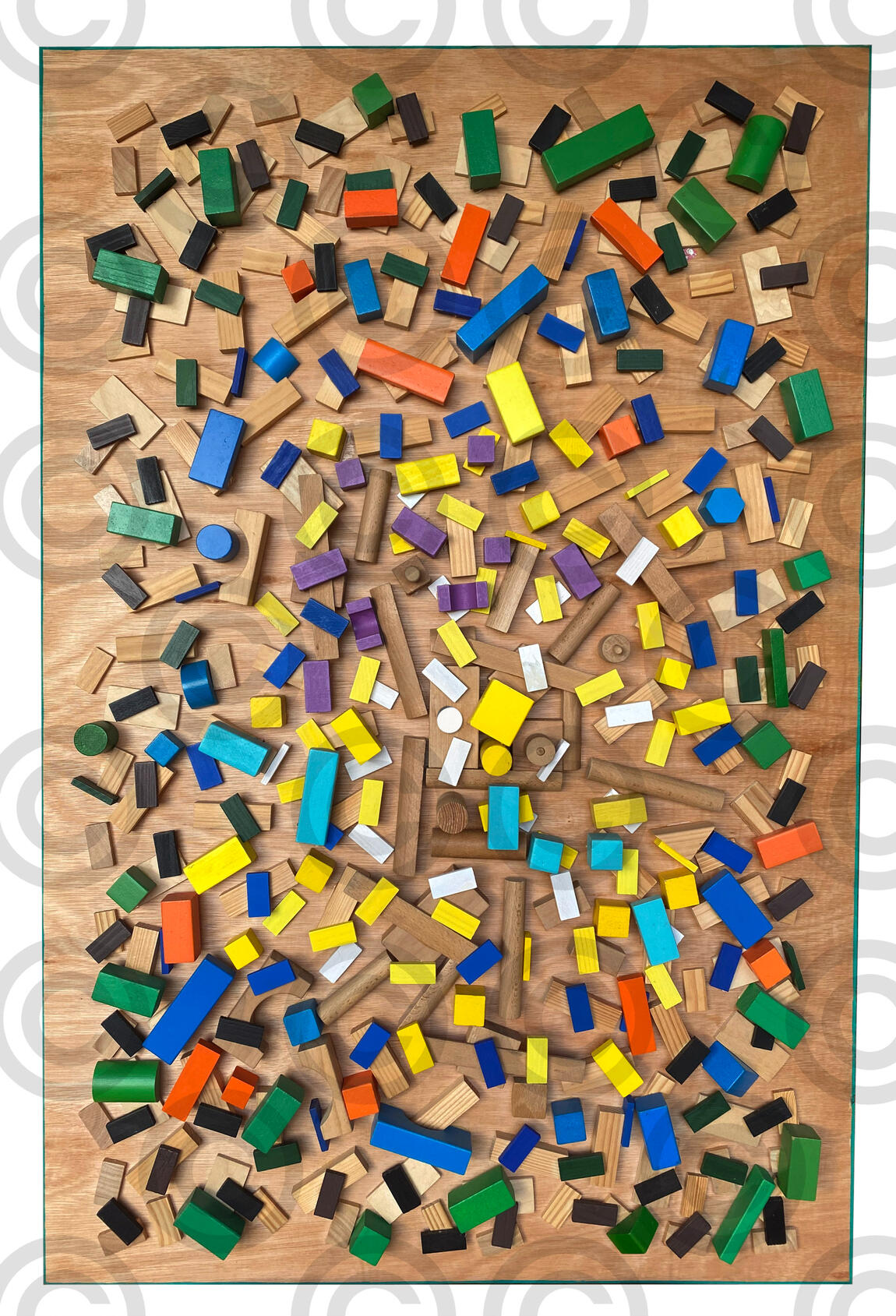
BEING81 cm x 122 cmBeing explores the spiritual idea of a soul, what it would mean to have a inner, unseen facet to an existence. Being emerged quite differently, an irregular piece, with a bright core, engulfed in darkness.

THE AWAKENING
Every artist has an awakening. Mine came with a set of old wooden toy blocks. As I picked them up and began to arrange them, intuition, knowledge, and memory all connected: the joy of childhood play met a career spent in 3D video game art; cubes, cylinders, spheres, in my hands and on the screen. Every form I had studied, every theory I had explored, seemed to live in these simple blocks.The blocks; worn, tangible, and full of history, felt alive. Like me, they carried traces of the past: dents, scratches, the echoes of other hands and imaginations. They were more than objects; their presence felt deeply necessary in my work.I don’t use them to symbolise ideas or imitate life. Instead, I let the shapes, colour, and line become an expression of thought itself, allowing the complexity of human cognition to flow.This process honours the same impulse that drives children to build intuitively. I guide the forms while letting consciousness lead, embracing the playful discoveries that appear when analysis steps aside.This work isn’t about revisiting childhood memories. It’s about allowing the now inner chid to surface; recognising that some of our most profound insights come through joy, experimentation, and play. Each piece captures a period of consciousness made visible : Psychoformalism


IN THE STUDIO
Here, I share my latest projects, processes, and creative thoughts.
My creative process
I keep everything organized and within reach so I am able to grab whatever feels right when I need it. For me, this maintains the creative flow and avoids that 'momentum-killing' cycle of stop-think-plan-review.My space needs to be reasonably tidy to keep my thoughts clear, but not sterile. The materials and energy around me are part of the creative process; it's about more than just having the right tools.
Intuition guides my initial decision making. I hunt for the right 'canvas', my choice depends on what's available and what will best showcase the content visually. I think of these surfaces as "grey matter"; the foundation where thoughts take shape. After selecting and positioning them, I clean and prepare them for their new life.Once ready, I usually spend a day or two just looking at the blank space. This is when I begin to hyper-focus on a thought or moment of consciousness. It becomes almost obsessive, shamanic even.

I go quiet and lose myself in that single idea.That's when the mental imagery appears. Vague but with distinct colour and form. It's not something I can record or document, it is fleeting mental imagery. For me, this marks the beginning of translation and signals I'm ready to start making the artwork.
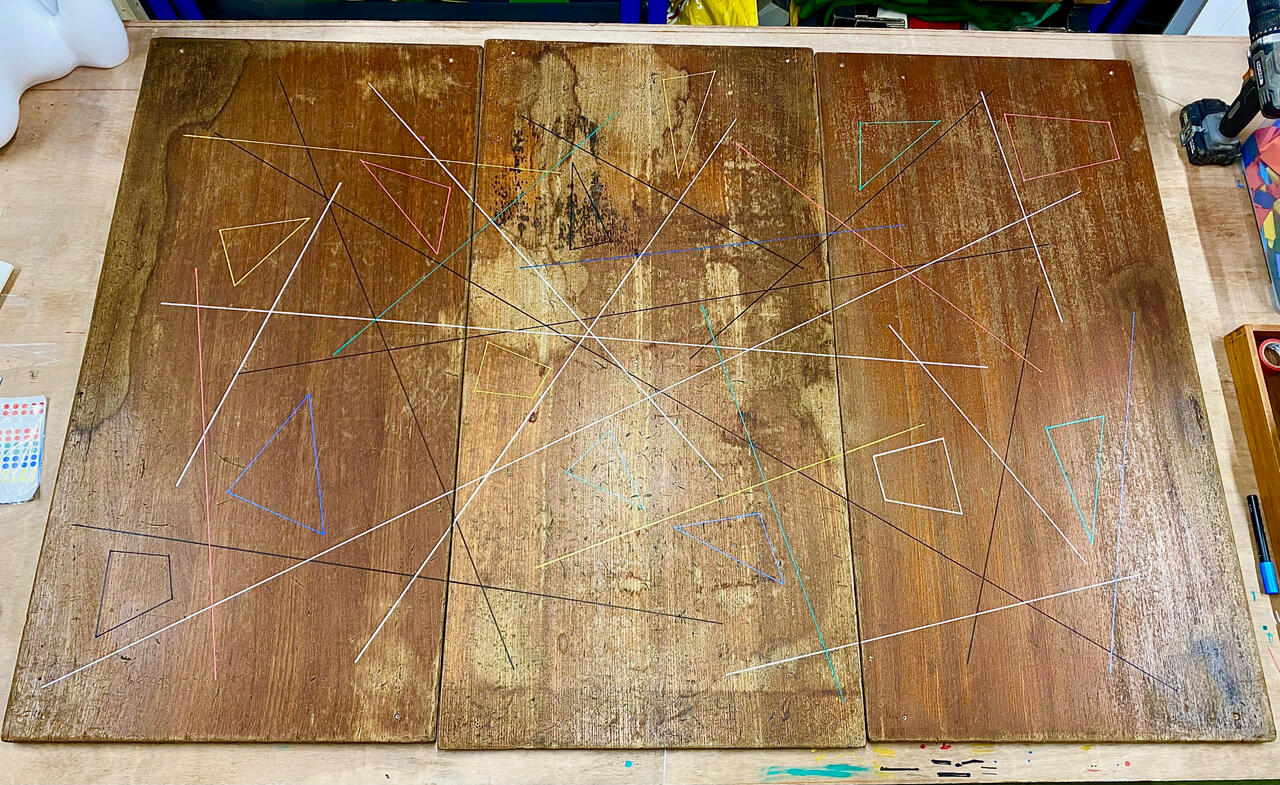
The underlying structure, whether it be line or shape, or even non existent, emerges first. Never planned or revisited, this spontaneous foundation to me represents the complexity of neural pathways, conduits of thought.

My perception of time often becomes distorted in the last phase.The selection of shape and colour happens in a trance-like state. There's an innate awareness of how elements relate to each other, but the placement is a free-flowing, intuitive act. Once a piece is placed, it is final; there is no such thing as a mistake.This is a time that is both serious yet playful. I'm usually engaged in an internal (and sometimes external) dialogue with the shapes themselves. The patterns and forms that emerge seem to resonate with the mental imagery I held beforehand.The triptych Cascade, shown on this page, which I just finished (Aug 2025), is a good example. It came from a time when my thoughts were in a kind of organised chaos; an exhausting but exhilarating state of delirium. The piece reflects those initial racing thoughts, that feeling of things being completely uncontrollable, all-encompassing, and how over time, they were filtered down, through transition, into their most pleasing and essential parts.After a piece is complete, I'm pretty worn out. I use the downtime to recharge, find new materials, and think about the finished artwork before beginning the next.
Experimentals

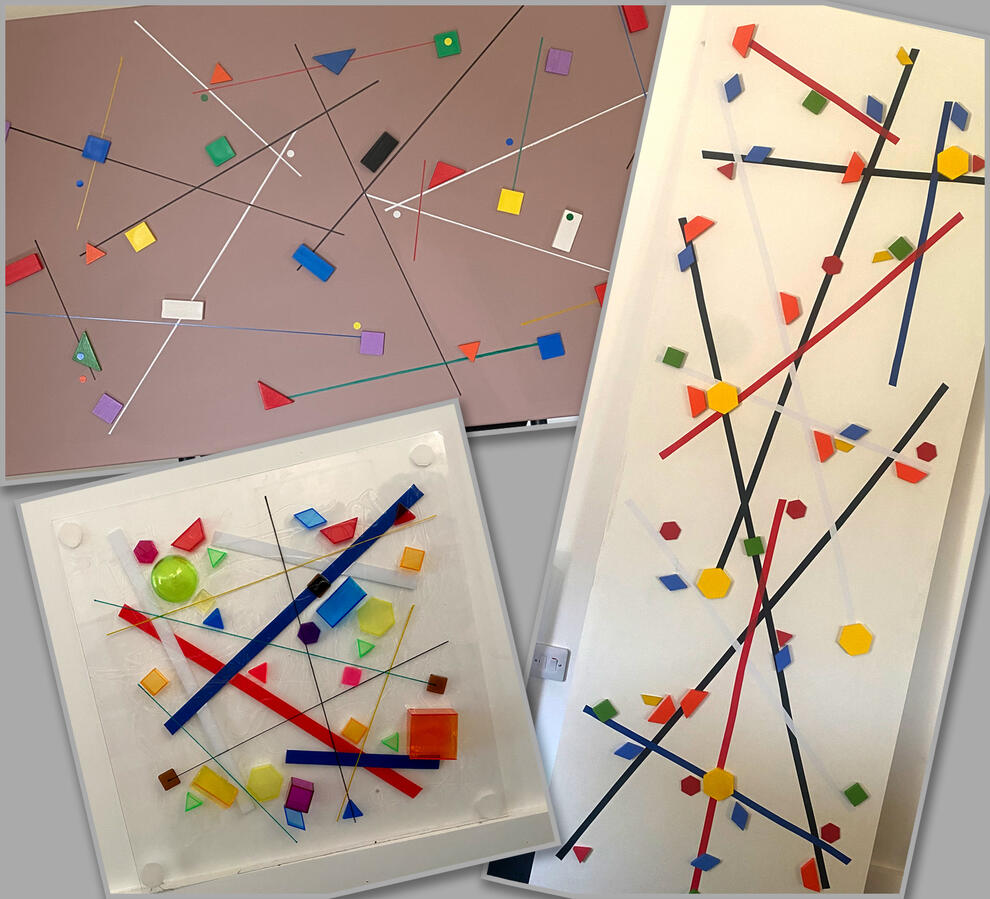
I am experimenting with shapes, lines, and different surfaces. Some of my recent work has become less cluttered, and some more compact. I want to understand if this shift reflects a deeper connection with the principles of Psychoformalism or if another factor is at play.
An if
It is my opinion that the spoken language is a tool that fails many in our world today. Translation, interpretation, definition all can be manipulated.Very few words in the modern world have genuine emotion attached to them, and even fewer words are used in a way where truth and falsehood can be attached to them. We take it on trust the person using them is honest and has good intention.Could there be a way where we see people who make decisions for us use a language that cannot be manipulated ? Could there be a way we could assess intent from a language ?Maybe we are on the cusp of an alternative and universal way of expression and communication. A purer more complex form that could offer an insight into the many diverse forms of consciousness that exist around us and beyond.Who knows, If so our future of being alone in the known universe could change.
Kinetic thoughts
I am currently looking at alternative ways to express emergent thoughts. Above is what I have given a preliminary title of Kinetic Thoughts.
The Psychoformalism Manifesto
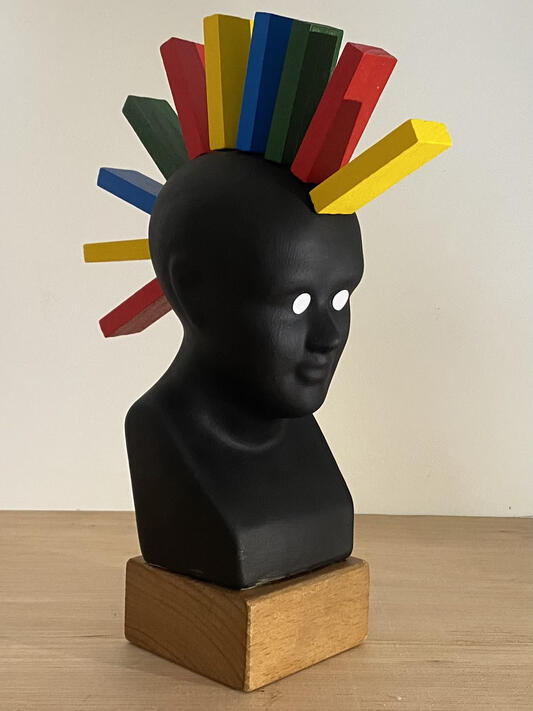
1. Form as ConsciousnessForm is not a vessel for thought — it is thought. Line, colour, and shape do not merely decorate the canvas; they mirror the structures of consciousness itself.2. From Perception to PhenomenonEvery artwork is an event of perception. Psychoformalism aligns with phenomenology: art does not represent the world but presents how the world appears to mind. To encounter a Psychoformalist work is to witness perception perceiving itself.3. The Embodied MindThe body is not excluded. We see with our eyes, but also with our movement, memory, and touch. Spatial tension, balance, and rhythm in Psychoformalist works are not optical tricks — they resonate through the whole embodied self.4. Neuroaesthetic GroundingPsychoformalism embraces the science of perception. Symmetry, dissonance, and colour are not arbitrary: they awaken distinct neural responses. A fractured plane may activate the brain’s conflict circuits; a balanced field may soothe its restless networks. The studio is a laboratory where cognition is tested through form.5. The Viewer as Co-CreatorMeaning is not fixed in the work. Just as thoughts take shape differently in each mind, so too do Psychoformalist forms. The viewer’s response completes the work — every act of looking is an act of co-creation.6. Against RepresentationPsychoformalism refuses the demand to picture reality. Reality is already overloaded with images. Instead, our task is to chart the invisible: distraction, focus, fragmentation, alignment — the architecture of inner life.7. In Dialogue with MachinesIn the age of AI and algorithmic image-making, Psychoformalism turns inward. While machines simulate output, Psychoformalism investigates input: the conscious spark that precedes image. Our geometry is not artificial; it is cognitive.8. Beyond the CanvasPsychoformalism is not limited to painting. Sculpture, installation, sound, digital environments, and performance can all carry thought into form. Wherever perception can be shaped, Psychoformalism can be practiced.9. A Shared Language, Not a StylePsychoformalism is not a personal signature but a shared inquiry. It is a language open to all who wish to explore form as consciousness. Each practitioner adds to its grammar; the movement grows by divergence as well as alignment.10. The Future of AbstractionAbstraction is not finished. Psychoformalism declares abstraction alive — not as nostalgia, but as necessity. In a fractured age, to re-trace the geometry of thought is to re-discover the possibility of coherence.Neil Gartell 2025











